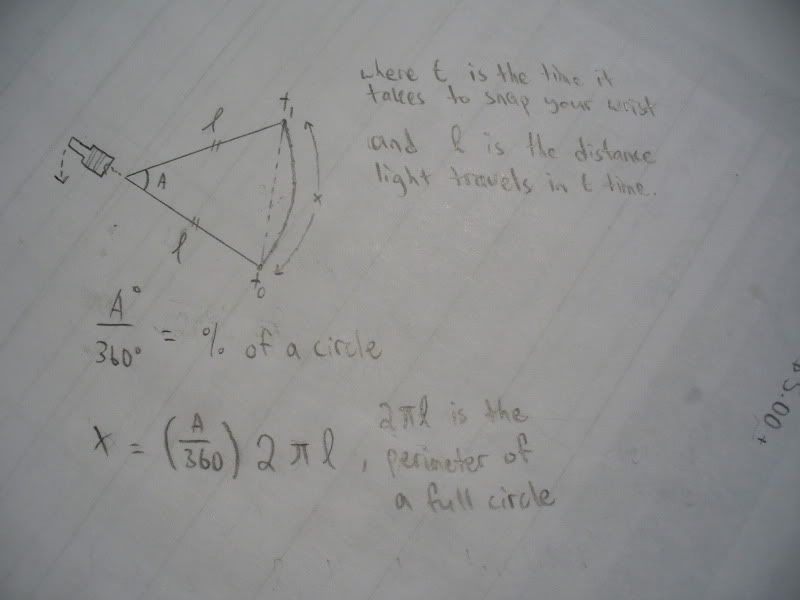I'm not entirely sure what you're asking but I think I have a feeling of what you're trying to say...
Light is a constant.
Imagine you were in a car and there was a radar sign in front of you, now imagine that instead of detecting the speed of the car, the radar sign was detecting the speed of the light coming out of the car. That radar sign will measure at an astounding 1079252848.8 km/h.
Now.. when the car starts moving @ say 100 km/h, you'd think the speed of the light coming out of the car would increase by 100 km/h, after all you'd think that the moving car would give the light "an extra push".
But surprisingly, that is NOT what happens. All our radar equipment and speed testing equipment in the world will only and always measure light travelling at 1079252848.8 km/h, whether the car is moving or not.
But how could this be? How could all measurements of light speed always come out the same? If you were running at a wall, it's coming at you faster than if you're standing still, with respect to that wall. But that's not true with light.
The speed of light is the same for everybody.
So here's how Einstein made sense of this extraordinary puzzle. Knowing that speed is just the measure of space in which something travels over time, Einstein proposed a truly stunning idea: that space and time could work together, constantly adjusting by the right amount so that no matter how fast you might be moving, when you measure the speed of light, it ALWAYS comes out to be... 1079252848.8 km/h.
To respect that absolute quality about light, time had to cease to be absolute, space had to cease to be absolute. And those two had to become relative, in such a way that they slosh between each other.
If space and time being flexible sounds unfamiliar, it's because we don't move fast enough in our daily lives to see this in action. But if you were in the car moving at near the speed of light, the effects would no longer be hidden.
For example, if you were on a street corner as I was went by close to the speed of light, you'd see space adjusting so that my car, it would appear just inches long, and you'd also hear my watch tinking off time VERY slowly. But from my perspective inside the cab, my watch would be ticking normally and space inside the car would appear as it normally does. Now when I look outside the car, I'd see space wildly adjusting.. all to keep the speed of light constant.
So with Einstein, time and space are no longer rigid and absolute. Instead, they meld together with motion, forming a single entity, that came to be called, "
space-time". Einstein made reason conquer sense.
This notion of space and time being a unity, to me, is one of the greatest insights that has ever occurred in science. It's so counter-intuitive to everything we've ever experienced as human beings.






